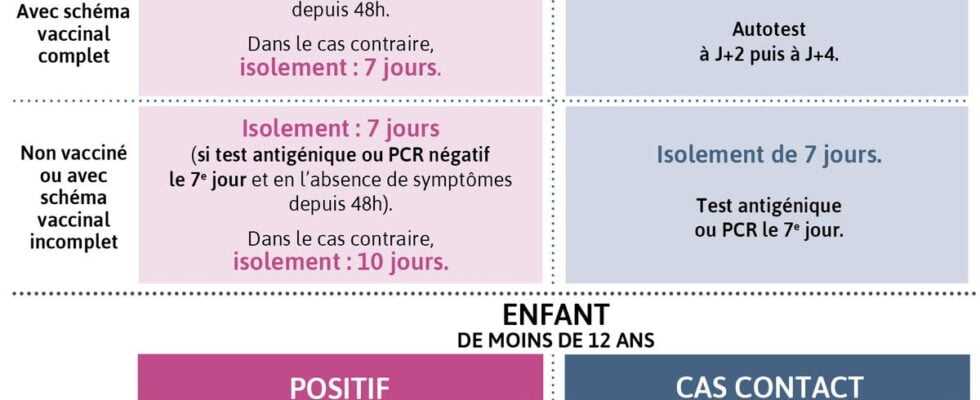Are you a little lost in the face of the new isolation rules in the face of Covid-19? Let’s try to see it clearly with our infographic
As of Monday January 3, 2022, the rules change for people who test positive and for contact cases. Be careful, the rules are not the same for those up to date on the vaccination side and for the unvaccinated and those who have not had their booster dose.
VISACTU
For adults who test positive and whose vaccination schedule is complete, the isolation period is 7 days, reduced to 5 days after a negative test on the 5th day and in the absence of symptoms for 48 hours.
For adults who test positive who have not been vaccinated or whose vaccination schedule is incomplete, the isolation period is 10 days. It can be reduced to 7 days after a negative test on the 7th day and in the absence of symptoms for 48 hours.
For adults in contact with a complete vaccination schedule : there is no longer a compulsory isolation period after a negative test. These contact cases will have to do a self-test on D + 2 then on D + 4. For them, these self-tests will be free.
For adults who have not been vaccinated or whose vaccination schedule is incomplete, the isolation period is 7 days. An antigen test or PCR should be performed on the 7th day.
For children who test positive (vaccinated and unvaccinated), the isolation period is 7 days, reduced to 5 days after a negative test on the 5th day and in the absence of symptoms for 48 hours.
For children in contact (vaccinated or unvaccinated) : no isolation. A PCR or antigen test should be performed immediately. A self-test must be performed on the 2nd day then another on the 4th day. Parents must provide a sworn statement that the tests have been carried out. If the tests are negative, the child can go back to school.
How’s it going for my child at school?
Jean-Michel Blanquer detailed on Sunday the new protocol in schools, and here too that changes for isolation and tests. An infographic from the National Education summarizes all the scenarios. Whether for children over 12 years old, or under 12 years old.

